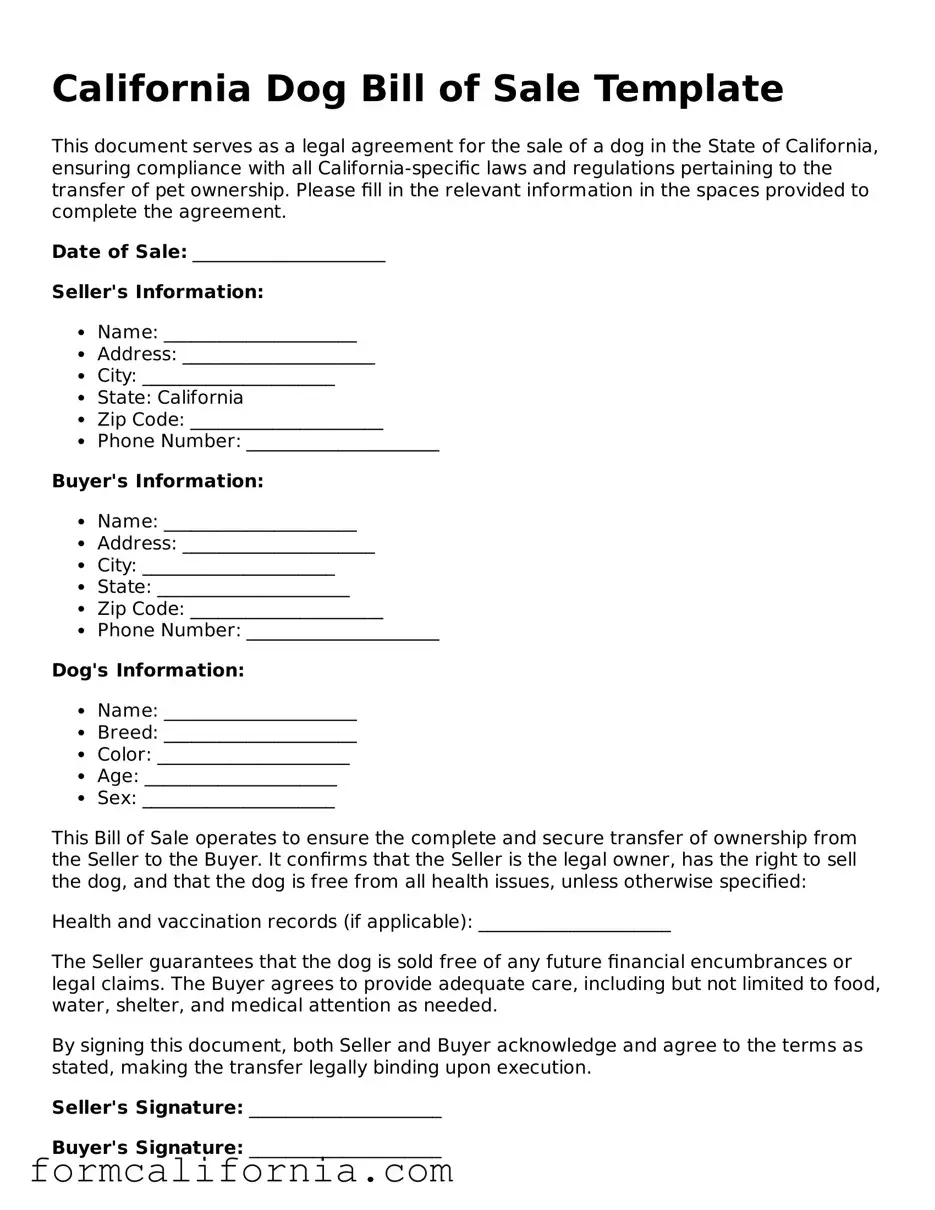California Dog Bill of Sale Template
This document serves as a legal agreement for the sale of a dog in the State of California, ensuring compliance with all California-specific laws and regulations pertaining to the transfer of pet ownership. Please fill in the relevant information in the spaces provided to complete the agreement.
Date of Sale: _____________________
Seller's Information:
- Name: _____________________
- Address: _____________________
- City: _____________________
- State: California
- Zip Code: _____________________
- Phone Number: _____________________
Buyer's Information:
- Name: _____________________
- Address: _____________________
- City: _____________________
- State: _____________________
- Zip Code: _____________________
- Phone Number: _____________________
Dog's Information:
- Name: _____________________
- Breed: _____________________
- Color: _____________________
- Age: _____________________
- Sex: _____________________
This Bill of Sale operates to ensure the complete and secure transfer of ownership from the Seller to the Buyer. It confirms that the Seller is the legal owner, has the right to sell the dog, and that the dog is free from all health issues, unless otherwise specified:
Health and vaccination records (if applicable): _____________________
The Seller guarantees that the dog is sold free of any future financial encumbrances or legal claims. The Buyer agrees to provide adequate care, including but not limited to food, water, shelter, and medical attention as needed.
By signing this document, both Seller and Buyer acknowledge and agree to the terms as stated, making the transfer legally binding upon execution.
Seller's Signature: _____________________
Buyer's Signature: _____________________
Date: _____________________
